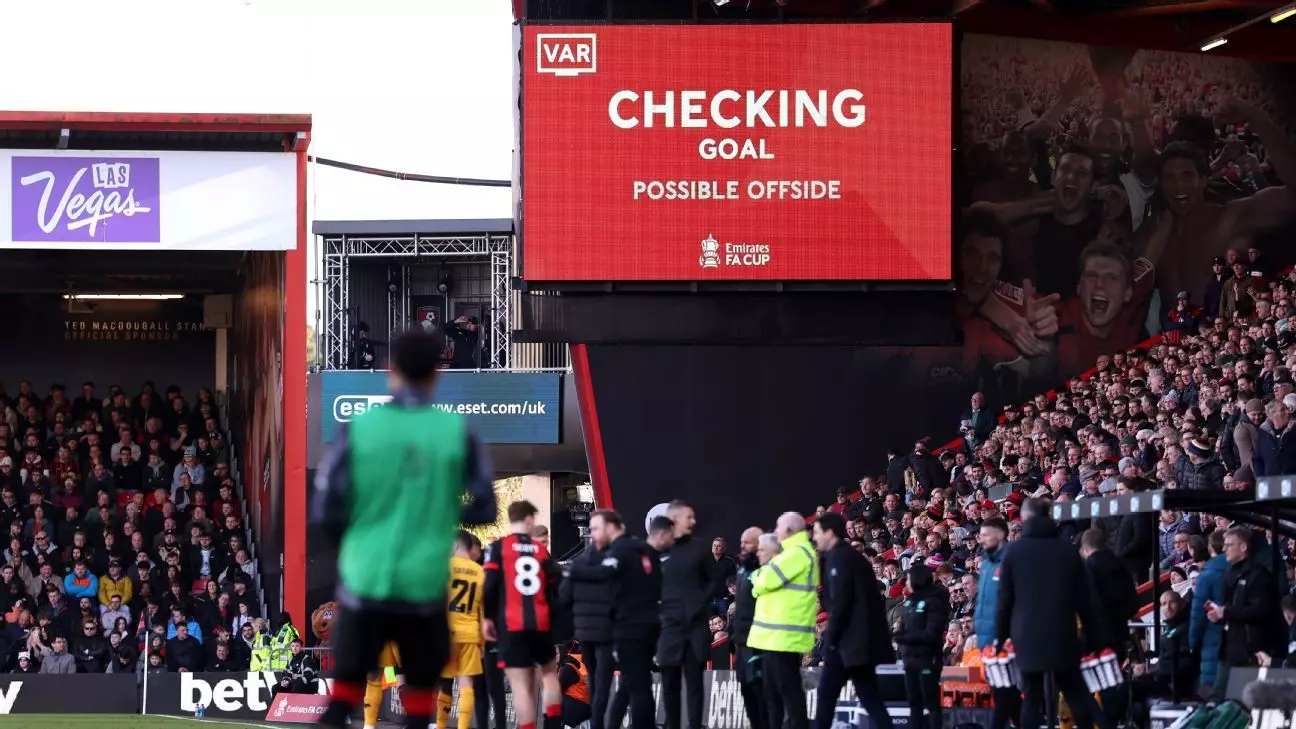In recent discussions within the football community, the prospect of broadening the scope of Video Assistant Referee (VAR) application has sparked both enthusiasm and skepticism. Howard Webb, head of the Premier League referees, recently revealed that the International Football Association Board (IFAB) is actively reviewing the capabilities of VAR, considering whether its use could extend beyond current parameters to include decisions such as yellow cards and corner kicks. This possibility signals a pivotal shift toward greater technological reliance in officiating, reflecting an increasing acknowledgment of video technology’s role in fostering fairness.
While VAR’s current scope focuses on crucial moments—goals, penalties, straight red cards, and mistaken identity—the suggestion to expand its remit raises fundamental questions. The benefit of more comprehensive review lies in minimizing incorrect decisions that can significantly influence match outcomes. Yet, critics argue that overreach might disrupt the flow of the game and diminish the human element vital to sport’s spontaneity. The challenge, therefore, is to strike a balance where technology supports, rather than hampers, the emotional and unpredictable nature of football.
Webb’s openness to revisiting VAR’s functionalities underscores a recognition that the game must adapt to modern expectations of accuracy. He emphasizes that if stakeholders see value in extending technology’s reach—such as correcting erroneously awarded corners or wrongly issued yellow cards—then these enhancements could be justified. Nonetheless, this ambition must be tempered with caution, ensuring that technological interventions do not lead to a sterile, overly scrutinized version of football where every minor decision is second-guessed.
Addressing Off-field Challenges and Upholding Respect
Beyond the tactical considerations of video technology, an equally pressing issue remains: the toxic environment surrounding match officials. The abuse faced by referees like Michael Oliver, who received threats of violence, and Anthony Taylor, confronted by fans post-match, exemplify a troubling societal shift. Webb rightly identifies this as a societal issue, reflecting a broader erosion of civility and respect in public discourse.
The phenomenon of online abuse and in-stadium hostility undermines the integrity of the game and endangers those trying to uphold its standards. Webb’s sentiment that such behavior is “wholly unacceptable” resonates strongly, highlighting the urgent need for cultural change. Authentic respect for officials is essential; they are human beings making complex split-second decisions under immense pressure. Tackling this problem demands not just sanctions but also education and a collective re-establishment of sportsmanship values.
Furthermore, Webb’s commentary on David Coote’s potential return underscores the importance of accountability within the refereeing community. Coote’s misconduct, particularly made public through derogatory remarks, has cast a shadow on the profession. His suspension and the prospect that he may not return to top-level officiating reflect a broader message: integrity and professionalism are non-negotiable if the sport is to regain trust.
The evolving landscape of football officiating hinges on technological progress and societal attitudes. While expanding VAR’s scope could enhance fairness, it must be implemented thoughtfully with respect for the game’s flow and human element. Simultaneously, fostering a culture of respect and accountability remains crucial in safeguarding the integrity of the sport—ensuring that football continues to be a source of joy and inspiration rather than division and hostility.

